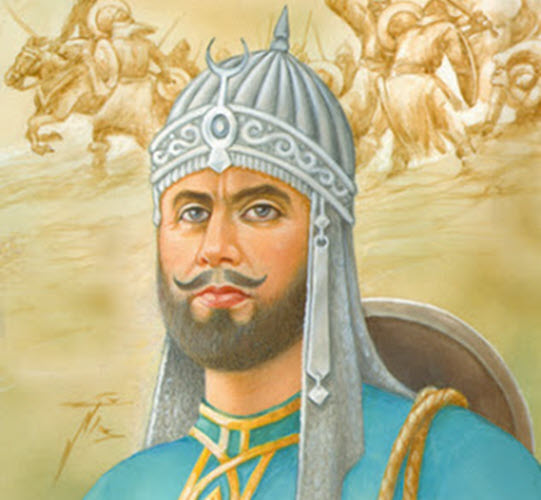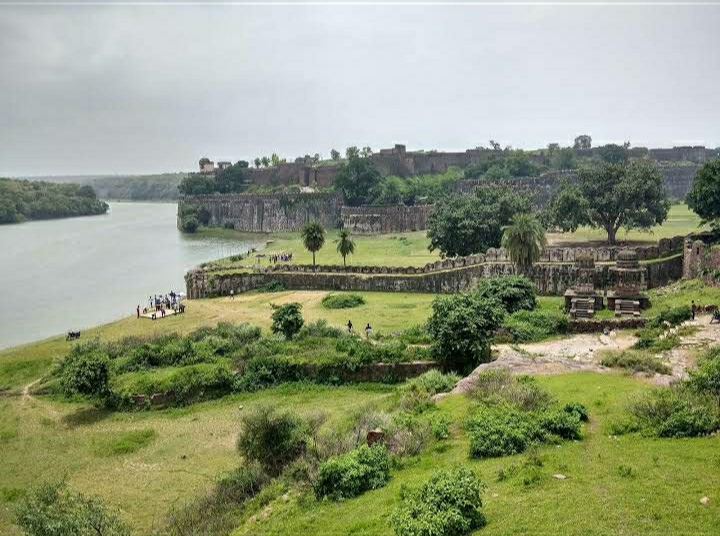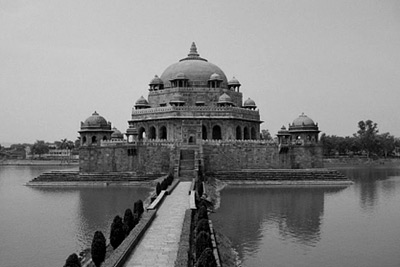Welcome to Top reading list
The Pashtun tribes settled in India in the 16th century AD became very powerful. These Pashtun who emigrated gradually to India in the Lodi Empire and were doing jobs to different local commanders become so powerful later and one of these later not only challenged Mughals but defeated them. Sher Shah Suri was one of those tribal chiefs, how he formed his army, how he organized his tribes and how this chief who served the Mughal empire later became so Powerful that he defeated Mughal King Humayun twice?
How long did the Suri Empire he established last and what were the deeds during his reign due to which his name is still alive in history? Let us all know His family belongs to Sur tribe. The ancestor of this tribe, Amjad Muhammad Sur, is said to belong to the Gauri family. After coming to Afghanistan, he married the daughter of a chief and settled there. Friends, this was the time when Delhi was ruled by Sultan Bahlol Lodhi, the chief of The Sahukhel tribe of Afghanistan.
The Sultan promoted the Afghans to come and settle in India. He promised Afghans jobs, estates and livelihoods. Due to Lodhi’s generosity, a large number of Afghans migrated to India and started settling in Delhi and surrounding areas. Among those emigrants, Sher Shah's grandfather Ibrahim Khan from the Sur tribe also came to India with his son. Arriving in India, he was employed by a Sardar Jamal Khan Sarang Khani and received many villages and an
Army of forty horsemen as a gift for his unparalleled service. Sher Shah's father had four marriages in his life and they had eight sons. Sher Shah was the eldest of eight brothers. He was born in 1486 in Feroze, an area of Delhi and was named Farid Khan. A few years after Sher Shah's birth, his grandfather Ibrahim Khan died, Umar Khan, a minister of Sultan Bahlol, gave Sahasram and some other areas in Rohtas district as a gift to Sher Shah's father. He had differences with
Their stepmother and brothers over the distribution of these estates and he came to Junpur in anger. Here he took a Jamal Khan Sarang Khani job. During this job, he also paid attention to his education and studied different religions besides Arabic and Persian. Some time later, Jamal Khan reconciled the father and son and Sher Shah got the jagir of Sahasram and Khawaspur. When Sher Shah took over the management of these areas, he implemented many reforms which made his good governance known far And wide.
But due to some family differences he left this jagir and came to a Mughal governor Bihar Khan Lohani who was ruling at that time in the areas which also included the jagir of Sher Shah. It was Bihar Khan Luhani who once gave him the title of Sher Khan for hunting lions. Friends, this was the time when the rule of the Lodhis was coming to an end and the sun of the Mughal Empire was rising over India. In those days some differences arose between Bihar Khan and Sher Shah After which, in 1527 AD, he after the battle of Khanwa joined Babar's army.
After serving in the Mughal army for almost a year and a half, he regained his jagir. Friends Emperor Babar, had seen the leadership abilities of Sher Shah very closely during this period and were afraid of his growing influence. On the other hand, Sher Shah also became alert and from there he once again came to the court of Bihar Khan Lohani, the ruler of Bihar. Bihar Khan forgot the differences and appointed him as his son's Mentor.
Shortly after the death of Bihar Khan Lohani, Sher Shah took over the entire administration of Bihar. On the other hand, Emperor Babar also died in 1530 and Humayun took the throne. The conquest of Bengal and the fort of Chinar At the same time there were differences between the Lohani tribes and Sher Shah and the administration of Bihar passed to the ruler of Bengal. Sher Shah combined several Afghan tribes to form a large army and in 1533, using a very tactical strategy, defeated the Bengali army.
Friends, Sher Shah's courage after this war Rose higher. His next battle after the conquest of Benga was Uttar Pradesh’s Chinar fort. This fort was considered one of the strongest forts in India at that time Sardar Taj Khan Sarang had it. Sher Shah did not have to make much effort to conquer the fort as Taj Khan was killed by his own son and his wife was married to Sher Shah. Due to this victory, immense wealth came into his hands. Wars With Humayun When Humayun heard of The victories of the Afghans, he marched from Agra to Lucknow to fight.
At that time the chief of the Afghan tribes was Sultan Mahmud Shah. This war took place in 1537. During the war, Sher Shah secretly sent a message to Humayun that he would not join the battle and would get out of the middle of the battle and that is what happened. Thus, with the departure of Sher Shah, Humayun achieved a great victory. Two years after this battle, Humayun again marched with troops, but this time Sher Shah Suri was in front of him.
Sher Shah defeated him in the battle of "Chosa" in 1539 and declared his kingdom by adopting the title of Fariduddin Sher Shah Suri. A year later, the defeated Humayun gathered an army of 100,000 and returned to Sher Shah. The two armies met at Qanooj, but once again Humayun was defeated. After this defeat, Humayun was forced to leave India. After his victory in this war, Sher Shah became known as the emperor of the whole of northern India.
The Administration of Sultan Sher Shah Suri ruled India for about five years and in this short period of rule he set such excellent examples of establishing justice in the state that even the opponents could not live without paying tribute. He introduced a judicial system to ensure the delivery of justice and established strict rules that no relative was forgiven for abuse. In this regard, a British historian wrote that "no government, not even the British government,
has given the proof of good governance and administrative skill in the administration of India as Sher Shah Suri did." In addition, the determination of the rating and value of coins and rupees is an achievement of Sher Shah which is still a testament to his foresight and wisdom. He named silver coin a rupee, the copper coin a “dam” and the gold coin a “mohar”.
This name is still used in the subcontinent and in many countries of the world. The currency system that was introduced inhis era was continued by the successive Mughal rulers and even the British government with a slight change. Another great achievement of Sher Shah is the construction and extension of the General Road and the highways built during the reign of the Indian King Chandragupta Morya in BC. The most spectacular of these highways is The Grand Trunk Road the GT Road.
The General Road was given this name during the British rule. The highway is about 2,500 km long and runs from Bengal to Kabul. A Road to Agra From Burhan Bor, a road from Agra to Rajasthan and a highway from Multan to Lahore. These highways still exist in India, Afghanistan and Pakistan under different names. In addition, they planted trees around India's most important highways and built about 1,700 inns to accommodate travelers. Mosques, wells were there for travelers in these inns. The staff was available round the clock to protect the lives and property of the travelers.
Food and drink were arranged separately for both Hindus and Muslims and the cost of all these arrangements was borne by the state. They set up cantonments along the route where there were complete arrangements for the delivery of mail. In these cantonments, cavalrymen were always present to deliver mails and government orders on time. Friends, apart from all these achievements, his greatest achievement was some agrarian reforms which made the farmer of that time prosperous. He set the scale for measuring the land of farmers all Over India.
Introduced a tax system based on these criteria. Land records thanks to these agrarian reforms As the department was founded. Sher Shah's agrarian reforms were such a wise act that later rulers were forced to adopt them. The credit for ending the unrest and crime in India at that time also goes to Sher Shah. He made such strict laws for criminals that People shuddered at the thought of them. He had imposed a responsibility on the Sardar of each village that if any crime was committed within his limits and the culprit was not caught, the Sardar would be punished.
A famous incident of his justice is narrated that once he punished his son Adil Khan so severely that the whole court trembled. Shergarh Fort and Rohtas Fort Sher Shah built many great forts in his lifetime which still show their glorious past. One of them is Shergarh Fort which is located in Bihar province. The fort was built between 1540 and 1545 and was named after Sher Shah Suri. Apart From this, his great constructions include the old fort of Delhi which was started by Humayun in his time but further expansion and repair of this fort in 1541 is the work of Sher Shah Suri.
In addition, Rohtas Fort, located on the banks of the Jhelum River in Jhelum District of Pakistan, is also one of his magnificent structures. The fort was built in 1542 and is one of the most popular historical sites in Pakistan today. In addition, He built many small and large forts, including his own
Tomb in the Sahasram area of Bihar, which was completed by his son after his death. Death Sher Shah Suri continued his winning streak after defeating Humayun. In connection with these victories, he sent his army to Kalingar fort of Madhya Pradesh. Sher Shah first ordered only rain of arrows and bullets on this fort because he wanted to capture a dancer named Patar alive in the fort. Be sure to let us know what you think of today's video about this famous ruler of India in the Comments section.
Raja Kirat Singh, who ruled over the fort of Kalingar, fought hard and closed the fort. Suris. Eventually Sher Shah ordered the army to shell the fort. As a result of this shelling, a shell hit a wall and came back, injuring Sher Shah . In May 1545, he met Khaliq Haqiqi. According to his wish, he was buried in the tomb of Sahasram in Bihar province. After the death of Sher Shah, his son Islam Shah Suri ascended the throne but the Suri Empire did not last long. In 1556, Humayun once again regained the throne of India by defeating the Suris.







.png)

0 Comments